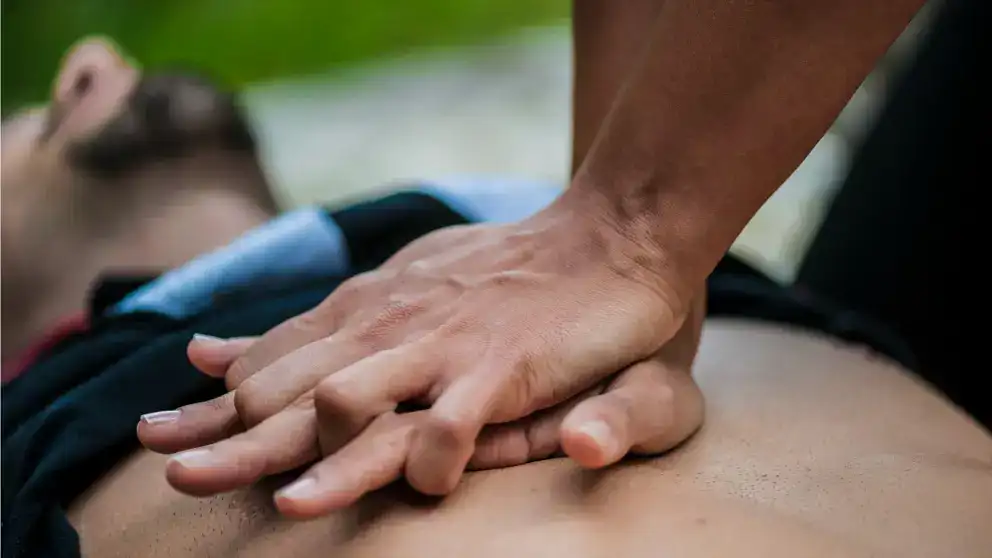A seemingly healthy person suddenly and unexpectedly collapses, her heart stopped. Cardiac arrest can happen to anyone, anywhere, at any age, often without warning. But why? Who’s at risk? And how can you protect yourself?
Dr. Andrew Krahn, an internationally recognized expert in cardiac arrhythmias and head of cardiology at the University of British Columbia’s Faculty of Medicine, explains this frightening phenomenon – and how being prepared could help you save a loved one’s life.
What is cardiac arrest?
Cardiac arrest is an electrical malfunction where the heart suddenly and unexpectedly stops beating. A person experiencing a cardiac arrest will collapse, lose consciousness, be unresponsive to touch or sound, and not breathing or not breathing normally.
How is it different from a heart attack?
A heart attack happens when a blocked artery slows or cuts off blood flow to the heart, but usually the heart continues beating. Typical heart attack signs are discomfort in the chest or upper body, shortness of breath, sweating, nausea and light-headedness.
What causes cardiac arrest?
Cardiac arrest can be caused by some types of arrhythmia, an irregular heartbeat that can short circuit the heart’s electrical system. And about one quarter of heart attacks actually trigger cardiac arrest – either immediately or within an hour or two. Other rare contributors to cardiac arrest include drug overdose, major electrolyte abnormalities, or large clots that block flow to the lungs.
Are there any warning signs?
If you have fainted, you should be evaluated by a physician because it may be a warning sign for a rhythm disorder that could cause cardiac arrest. Although fainting is a relatively common occurrence, if it occurs during physical activity or from emotional excitement, it can be a warning sign of sudden arrhythmia death syndrome (SADS). Also, a heart attack can precede a cardiac arrest, so it’s critical to know the signs of a heart attack to get medical attention immediately. If you experience tightness in your chest, Dr. Krahn says, you should be aware that it isn’t necessarily from a pulled muscle.
What should you do if someone has a cardiac arrest?
Act fast because it’s a medical emergency and every second counts.
- Phone 9-1-1 and shout for an AED.
- Start CPR right away.
- Use an AED as soon as one is available.
Why is response time critical?
Brain injury can begin within minutes. Response times for emergency medical services can be six or more minutes in urban centres and longer for northern and remote communities. That’s why it’s important for bystanders to step up and act quickly.
How does CPR and using an AED help?
When the heart stops beating, blood stops flowing to the brain and other vital organs. CPR helps circulate blood and oxygen to the brain and other vital organs, and an AED can deliver a shock to restore the heart’s natural rhythm. Performing CPR and using an AED immediately can double a person’s chance of survival.
- Learn CPR: Find a training course near you
- Learn about the state of cardiac arrest in Canada in the new 2024 Heart & Stroke report. Every second counts.
